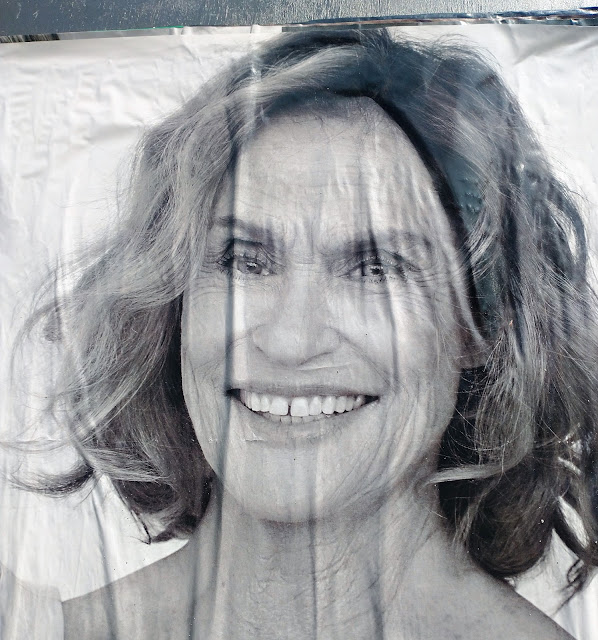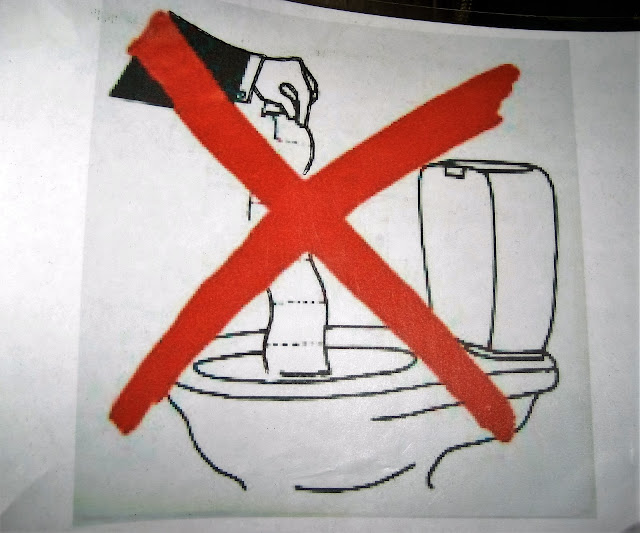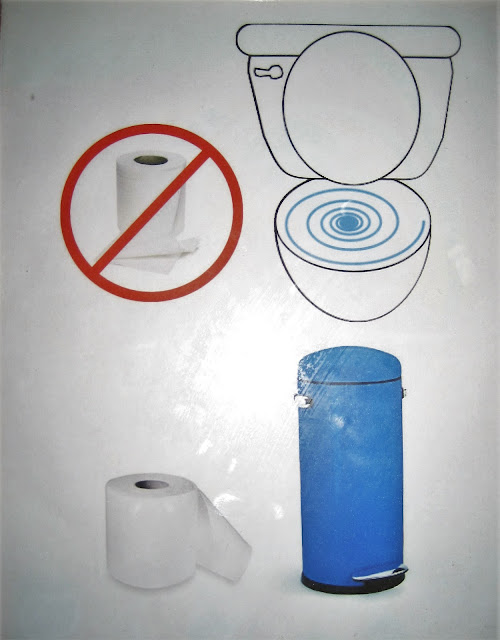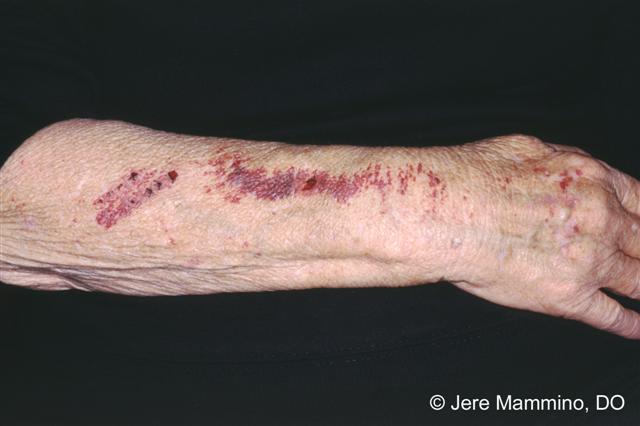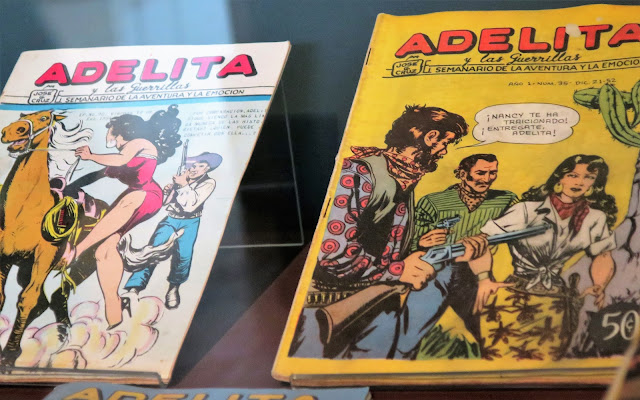 |
| Bywater Crescent Park, New Orleans, Louisiana. March 2021. Credit: Mzuriana. |
The plan
I already wrote about it here. Today's post is a second pass.
Currently, my lifestyle is such that I move to new cities regularly. But in a handful of years, my plan is to choose a so-called final residing place so that I can plant a garden of mutual support in a community.
In my perfect world, the criteria for that place are:
- Walkability
- Affordability
- Mild weather
- Diversity of age, complexion, cultural heritage, history
- Cultural activities
Walkable communities
In one of my past lives, I was introduced to "walkable communities." The community where I lived brought in Dan Burden, the premier evangelist of same at that time.
What a revelation! New language and new ideas for me:
- Traffic calming
- Mixed use zoning - not only residential-and-commercial mixed use, but socio-economic-level diverse housing
- The downsides to cul-de-sacs
- The counter-intuitive rebound effect of too many stop signs or stop lights
- Traffic circles versus traditional four-way stops
- Food deserts
I was further enlightened by the engrossing (and sometimes humorous) book, Traffic: Why We Drive the Way We Do, by Tom Vanderbilt.
I loved the interplay in the book between the (wrong) common wisdoms against the counter-intuitive facts. Examples: Why the drivers of new cars, SUVs, and pick-ups are more dangerous than drivers of older cars and smaller cars. Why it's hard to "see" motorcyclists, some bicyclists, pedestrians, and people coming at you the wrong way on the road.
Mr. Vanderbilt's explanation that what we see in traffic depends on what we expect to see (and other factors) fascinated me.
There was also a memorable Washington Post article (circa 2000?) about a tragic pedestrian-vehicle encounter, in which it was pointed out that sometimes it is safer for pedestrians to jaywalk than to cross a street at an intersection. Thus far, I haven't been able to re-surface that article, but a 2001 Washington Post opinion piece, Pedestrians in Peril, explains the thinking on the idea.
Note: I have personal experience. One day, as I walked across a busy road at an intersection with traffic lights, where I had the right-of-way at the time of crossing, a car turned onto the street from the cross street, and struck me. As the Pedestrians in Peril author states:
Newspaper accounts of pedestrian accidents [and law enforcement, car insurance companies, and people who hear about the hit] always make a point of reporting whether the victim was using a crosswalk. This should be perhaps the third or fourth question asked, after:
- "Was the driver speeding or breaking other traffic laws?"
- "Was he or she paying enough attention to avoid an accident?"
- "Is the road -- including crosswalks and traffic signals -- designed for reasonably safe crossing?"
In my case, the driver had been distracted, trying to use his cell phone while making the turn.
Intersections are, by their very design, pain points. The left-hand turn at intersections is the most acute pain point. And that's exactly what the driver had attempted to do when he hit me with his car. Although I had the right of way because I was crossing a street at a time when that street's light was red, the driver who hit me had a green light, which meant he could legally turn left at the intersection IF a pedestrian was not in the perpendicular crosswalk.
I never crossed at that intersection again. Instead, I jaywalked to get to the opposite side of the street. It was safer because I could gauge the traffic oncoming both ways, not only on that street, but from the intersecting street.
On one hand, the jaywalking versus "legal" crossing argument above is a bit of a detour in today's post.
On the other hand, when I say I seek a "walkable community," I see that this is not good enough.
As I write this, I live in a gorgeous neighborhood with sidewalks on both sides of every street.
But the sidewalks are unsafe for people who:
- Use wheelchairs or walkers or push strollers
- Have depth perception challenges
- Have gait irregularities that compromise balance
.... because the roots of trees or sidewalk-invading (yet lovely) plantings heave or obscure too many sections.
"Walkable" is not good enough
The older we get, the more likely we will acquire mobility, vision, or hearing disabilities.
We may:
- Walk (or wheel) more slowly than younger folks when we cross a street, for a variety of physical reasons
- Have slower reflexes when confronted with sudden traffic events (i.e. an oncoming vehicle or a bicycle that is passing us from behind)
- Experience differences in assessing the distances between us and oncoming vehicles
So the community I seek needs to be ADA-compliant. It needs to be a community that embraces universal design. The Department of Justice offers user-friendly guides for communities:
"Livable" communities
The AARP uses the term "livable communities." The criteria for a livable community are:
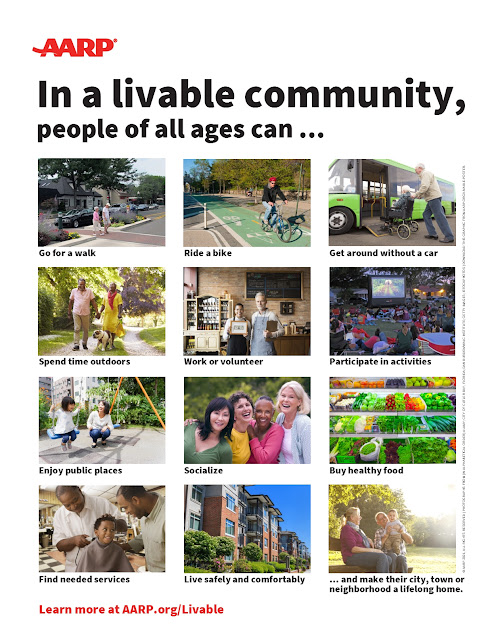 |
| AARP Livable Community poster. Credit: AARP |
The AARP page, AARP Livable Communities, is fat with good information.
